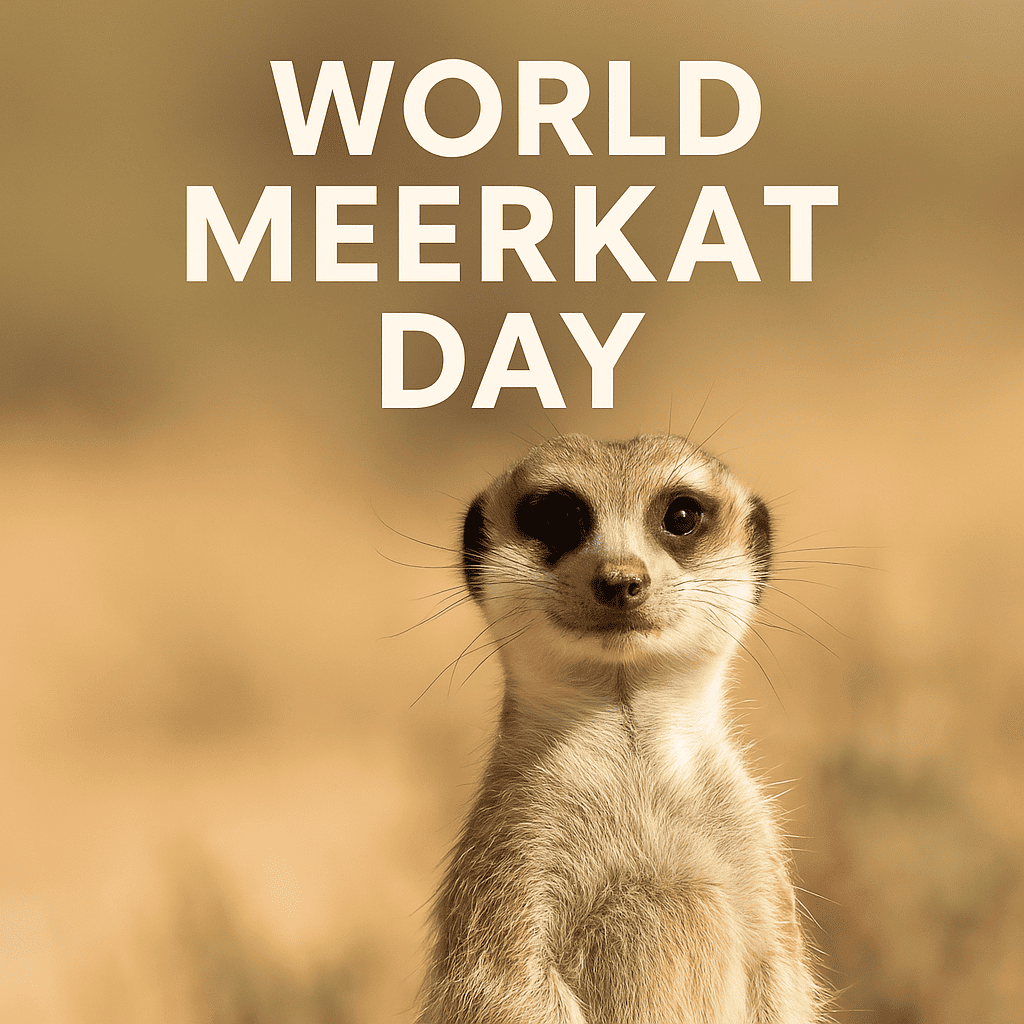World Meerkat Day 2025 – Celebrating Sentries of the Savanna

Every year on July 3, wildlife lovers around the globe pause to celebrate World Meerkat Day—a day dedicated to the charismatic suricates of the southern African plains. First marked in 2018 at Taronga Western Plains Zoo, this occasion has become a global call to understand and protect these fascinating mammals.
A Glimpse into the Meerkat World
Meerkats (Suricata suricatta) stand about 30 cm tall and weigh around 1 kg. With their sandy coats and black “sunglasses,” they are perfectly suited to semi-arid environments like the Kalahari and Namib deserts in South Africa, Botswana, Namibia, and Angola . They dig complex burrow systems—up to five metres wide and layered—with numerous entrances, offering refuge from predators and harsh weather.
Living in Clans: Mob Life
Meerkats live in tight-knit clans of 3 to 50 individuals, with an average size around 20. These groups feature a structured hierarchy, where the dominant female leads breeding and subordinate members help with pups and sentry duties.
Roles that Keep the Mob Safe
One of the most endearing sights is a meerkat standing tall—on sentry duty. These lookouts warn the group of danger with specific calls for aerial or terrestrial threats, allowing others to forage safely.
Diet & Survival Tactics
Meerkats are omnivorous. They mainly feast on insects, spiders, and grubs, but they also eat eggs, small reptiles, and even scorpions—against whom they possess venom resistance. With acute smell and powerful claws, they efficiently dig for hidden prey and roots.
Amazing Adaptations
Adaptation is key: they have dark eye patches to reduce sun glare, nictitating membranes to protect their eyes while digging, and tightly closing ears to keep out dust. Their burrow systems buffer extreme temperatures, keeping them cooler in summer and warmer in winter.
Raising the Next Generation
Gestation lasts about 60–70 days, and litters of 3–7 pups follow. Pups are born blind and remain in the burrow for around three weeks. Afterward, they emerge under the watchful eyes of babysitters and sentries, learning to forage and socialize quickly.
Why World Meerkat Day Matters
Though classified as Least Concern by the IUCN, meerkats face habitat pressure and the threat of the illegal pet trade. Today’s recognition helps raise awareness about their ecological importance and the need to protect their environment—from education in zoos to online campaigns encouraging #WorldMeerkatDay and sentry selfies.








